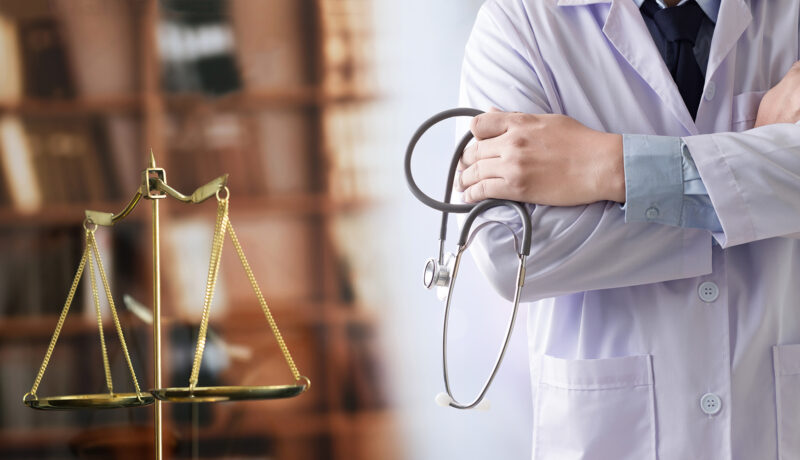Medical malpractice cases are complex, and if you’ve found yourself pursuing one, you’re likely wondering: what does it really take to win? The answer lies in the evidence. The strength of a case doesn’t just hinge on what happened—it’s about proving it in a way that leaves no room for doubt.
So, what exactly do medical malpractice lawyers need to build a compelling case?
The Basics of Proving Medical Malpractice
Every medical malpractice case needs to prove four key elements: duty of care, breach of duty, causation, and damages. In simpler terms, this means showing that the healthcare provider owed you care, they didn’t meet the standard expected of them, their failure caused harm, and that harm led to tangible losses.
Sounds straightforward, right? Not quite. That’s why gathering the right evidence is absolutely essential. Without it, these points are just claims without backing.
Medical Records – The Core of the Case

Let’s start with the foundation: medical records. These are the bread and butter of malpractice cases because they document everything. Medical records include details about diagnoses, treatments, prescriptions, and communication between you and your healthcare providers. A medical malpractice attorney Atlanta will use them to pinpoint where things went wrong and to show discrepancies in care.
For instance, if a surgeon overlooked critical information in your chart before an operation, the records will reveal it. They also serve as a timeline to track the sequence of events leading to your injury. One tip? Ensure you request complete copies of your records, as missing details can weaken your case.
Expert Testimony – The Voice of Authority
In most cases, a jury or judge isn’t trained in medicine. That’s where expert witnesses step in. These professionals, usually doctors or specialists, analyze your case and explain where the medical provider failed to meet the accepted standard of care. Without this expert perspective, it can be challenging to prove that the healthcare provider’s actions were negligent rather than just a bad outcome.
Imagine you had complications after surgery. Was it due to negligence or a risk you were warned about beforehand? An expert witness clears up this kind of confusion, showing the difference between an unavoidable complication and a preventable error.
Evidence of Damages – Showing the Impact
Proving negligence is only half the battle. The other half shows how that negligence affected your life. This is where evidence of damages comes in. Damages aren’t just financial losses, though those are a big part of it. Lawyers gather evidence of:
- Medical bills – To show the cost of additional treatment.
- Lost wages – If your injury prevented you from working.
- Pain and suffering – Using documentation or personal accounts to show emotional or physical distress.
- Future care needs – Expert assessments to predict ongoing costs related to your injury.
Your lawyer will piece together these details to illustrate the full extent of the harm caused. Think of it like connecting dots to form a complete picture of the impact on your life.
Witness Statements – What Others Saw

If someone witnessed what happened, their testimony can be invaluable. This might include other healthcare workers, staff members, or even family members present during critical moments. For example, if a nurse noticed a doctor failing to follow proper procedures, their account could be pivotal in proving negligence.
Even non-medical witnesses play a role. Family members or friends who observed your condition before and after the incident can highlight how the injury changed your daily life. These firsthand accounts add depth and credibility to your case.
Hospital Policies and Protocols – The Rulebook
Did the hospital or clinic follow its own rules? Surprisingly, internal policies and protocols can often be crucial evidence. If a facility ignored its guidelines—whether it was a lack of informed consent, improper sanitation, or inadequate staffing—it strengthens your argument.
Lawyers often dig into these policies to identify where standards fell short. It’s not just about what should have happened—it’s about whether the institution itself had safeguards in place and whether those were followed.
Photos and Videos – Visual Proof
Sometimes, a picture really is worth a thousand words. Photos or videos of your injuries, the hospital environment, or anything related to your care can serve as compelling evidence. For instance, if poor hygiene in a facility contributed to your infection, photos documenting the conditions are hard to dispute.
Visual evidence also helps illustrate the severity of your injury in ways that words or medical jargon can’t always capture. It makes the impact real and relatable for those deciding the case.
Communication Records – What Was Said

Conversations with your healthcare provider—whether in person, over the phone, or through emails—can reveal a lot. Lawyers often gather communication records to show whether the provider informed you of risks, gave you proper instructions, or followed up appropriately.
In cases where informed consent is disputed, these records can prove whether you were fully aware of the risks involved in a procedure. They also help identify if there was a breakdown in communication that contributed to the harm.
The Power of Thorough Preparation
Ultimately, winning a medical malpractice case comes down to preparation. The evidence needs to be detailed, thorough, and undeniable. Lawyers work meticulously to ensure that every piece of the puzzle fits together—from proving the provider’s responsibility to demonstrating the damages you’ve suffered.
If you’re pursuing a case, remember that gathering evidence isn’t something to handle casually. It’s about laying the groundwork for success. The stronger your evidence, the more persuasive your case will be.
Moving Forward With Confidence
Medical malpractice cases might feel daunting, but with the right evidence and a skilled lawyer, they’re far from impossible. Every piece of proof—from medical records to witness statements—works together to create a clear, undeniable story.
So, if you’re in the midst of this process, focus on building that story. With strong evidence on your side, you’re setting yourself up for the best possible outcome.
Related Posts:
- FDA Medical Device Recalls and What You Should Be Aware of
- Essential Tips for Physicians to Manage Medical…
- What is Cloud Computing? Everything You Need to Know
- Data Center Design 101: Everything You Need to Know
- Centralized vs Decentralized Network: Which One Do You Need?
- VPLS vs MPLS: How They Are Different and Why You Need Both








